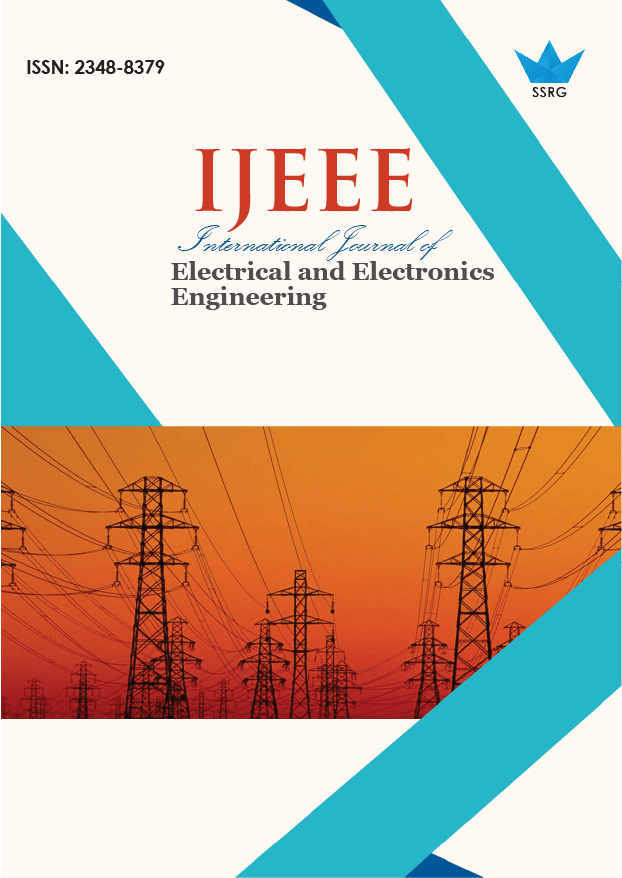M-Pilot: An Autonomous Intelligent Advisory System with Social IoT (SIoT) Framework for Enhancing QOL

| International Journal of Electrical and Electronics Engineering |
| © 2025 by SSRG - IJEEE Journal |
| Volume 12 Issue 3 |
| Year of Publication : 2025 |
| Authors : Haritha Akkineni, Madhu Bala Myneni, CH.V.K.N.S.N. Moorthy, Sisira Boppana |
How to Cite?
Haritha Akkineni, Madhu Bala Myneni, CH.V.K.N.S.N. Moorthy, Sisira Boppana, "M-Pilot: An Autonomous Intelligent Advisory System with Social IoT (SIoT) Framework for Enhancing QOL," SSRG International Journal of Electrical and Electronics Engineering, vol. 12, no. 3, pp. 45-54, 2025. Crossref, https://doi.org/10.14445/23488379/IJEEE-V12I3P105
Abstract:
In the era of Industry 4.o, technological advancements are focused on monetizing and maximizing the growth of the digital economy. This is the transition stage in India from mobile to intelligent and immersive computing. Presently, the major focus is on the personalization of services with emerging technologies that are deeply integrated with existing mobile apps. These technologies aim to build a connected ecosystem through closely connected society and interpersonal interactions. In this scenario, mobile apps associated with Intelligent Personal Assistants (IPA) are gaining momentum to address various user centric use cases to enhance Quality of Life (QOL). The existing IPAs (Amazon Alexa, Google Assistant, etc.) related to various verticals (Health, Safety, Travel, Family, etc.) have their limitations, such as a lot of interactions with the user, misinterpretation of voice commands, device-specific dependency, no regional language support; vertical-specific applications; no interaction among mobile apps in and among verticals; no personalized assistance and recommendations. This leads to inefficient exploitation of the services offered by existing applications. This paper focuses on a novel framework that addresses the above said drawbacks and can be overcome through the proposed Social Internet of Things (SIoT) architecture by considering mobile apps as things and establishing communication among verticals existing in her/his mobile. The objectives of the proposed framework, M-Pilot, are to connect, communicate, and interoperate among relevant mobile apps in respective verticals to enhance QOL. It takes input from an individual’s mobile app metadata, and the outcomes are personalized recommendations, notifications, and assistance.
Keywords:
Smart City, Industry 4.o, Semantic interoperability, Social Objects (SO), Health.
References:
[1] Tommy Persaud et al., “Smart City Innovations to Improve Quality of Life in Urban Settings,” IEEE Global Humanitarian Technology Conference, Seattle, WA, USA, pp. 1-8, 2020.
[CrossRef] [Google Scholar] [Publisher Link]
[2] Bhagya Nathali Silva et al., “Urban Planning and Smart City Decision Management Empowered by Real-Time Data Processing Using Big Data Analytics,” Sensors, vol. 18, no. 9, pp. 1-19, 2018.
[CrossRef] [Google Scholar] [Publisher Link]
[3] Kaya Kuru, and Darren Ansell, “TCitySmartF: A Comprehensive Systematic Framework for Transforming Cities into Smart Cities,” IEEE Access, vol. 8, pp. 18615-18644, 2020.
[CrossRef] [Google Scholar] [Publisher Link]
[4] Bilal Afzal et al., “Enabling IoT Platforms for Social IoT Applications: Vision, Feature Mapping, and Challenges,” Future Generation Computer Systems, vol. 92, pp. 718-731, 2019.
[CrossRef] [Google Scholar] [Publisher Link]
[5] Erdem Balci, “Overview of Intelligent Personal Assistants,” Acta Infologica, vol. 3, no. 1, pp. 22-33, 2019.
[CrossRef] [Google Scholar] [Publisher Link]
[6] Fadi Al-Turjman, “5G-Enabled Devices and Smart-Spaces in Social-Iot: An Overview,” Future Generation Computer Systems, vol. 92, pp. 732-744, 2019.
[CrossRef] [Google Scholar] [Publisher Link]
[7] João Santos et al., “An Iot-Based Mobile Gateway for Intelligent Personal Assistants on Mobile Health Environments,” Journal of Network and Computer Applications, vol. 71, pp. 194-204, 2016.
[CrossRef] [Google Scholar] [Publisher Link]
[8] Angelo Croatti, and Alessandro Ricci, “Mobile as Personal Assistant Agents: The Jaca-Android Framework for Programming Agents Based Applications on Mobile Devices,” Autonomous Agents and Multi-Agent Systems, vol. 34, no. 2, 2020.
[CrossRef] [Google Scholar] [Publisher Link]
[9] João Santos et al., “Intelligent Personal Assistants Based on Internet of Things Approaches,” IEEE Systems Journal, vol. 12, no. 2, pp. 1793-1802, 2018.
[CrossRef] [Google Scholar] [Publisher Link]
[10] Niepukhrie Tepa et al., “Reconceptualising Smart Cities: A Reference Framework for India,” Working Papers, eSocialSciences, 2015.
[Google Scholar] [Publisher Link]
[11] Jiong Jin et al., “An Information Framework for Creating a Smart City Through Internet of Things” IEEE Internet of Things Journal, vol. 1, no. 2, pp. 112-121, 2014.
[CrossRef] [Google Scholar] [Publisher Link]
[12] India Urban Data Exchange, Unleashing the Power of Data for Public Good, IDUX-India Urban Data Exchange, 2020. [Online]. Available: https://iudx.org.in/
[13] Smart City as Platform Data Exchange Framework for Indian Smart Cities, Smart Cities Mission Ministry of Housing and Urban Affairs, 2018. [Online]. Available: https://iudx.org.in/archives/Discussion_Paper-Data_Exchange_Framework_for_Indian_Smart_Cities.pdf
[14] Abhinav Bassi et al., “An Overview of Mobile Applications (Apps) To Support the Coronavirus Disease 2019 Response in India,” Indian Journal of Medical Research, vol. 151, no. 5, pp. 468-473, 2020.
[CrossRef] [Google Scholar] [Publisher Link]
[15] M.S. Roopa et al., “Dynamic Management of Traffic Signals through Social IoT,” Procedia Computer Science, vol. 171, pp. 1908-1916, 2020.
[CrossRef] [Google Scholar] [Publisher Link]
[16] Imagine a new Connected World - Intelligent. Immersive. Inventive, KPMG, 2020. [Online]. Available: https://kpmg.com/br/pt/home/insights/2020/01/imagine-a-new-connected-world.html
[17] Honghao Gao et al., “The Deep Features and Attention Mechanism-Based Method to Dish Healthcare Under Social IoT Systems: An Empirical Study with a Hand-Deep Local-Global Net,” IEEE Transactions on Computational Social Systems, vol. 9, no. 1, pp. 336-347, 2022.
[CrossRef] [Google Scholar] [Publisher Link]
[18] Zhaolong Ning et al., “Guest Editorial Special Issue on Collaborative Edge Computing for Social Internet of Things Systems,” IEEE Transactions on Computational Social Systems, vol. 9, no. 1, pp. 59-63, 2022.
[CrossRef] [Google Scholar] [Publisher Link]
[19] Farshad Firouzi et al., “Harnessing the Power of Smart and Connected Health to Tackle COVID-19: IoT, AI, Robotics, and Blockchain for a Better World,” IEEE Internet of Things Journal, vol. 8, no. 16, pp. 12826-12846, 2021.
[CrossRef] [Google Scholar] [Publisher Link]
[20] Sunil Jacob et al., “AI and IoT-Enabled Smart Exoskeleton System for Rehabilitation of Paralyzed People in Connected Communities,” IEEE Access, vol. 9, pp. 80340-80350, 2021.
[CrossRef] [Google Scholar] [Publisher Link]

 10.14445/23488379/IJEEE-V12I3P105
10.14445/23488379/IJEEE-V12I3P105